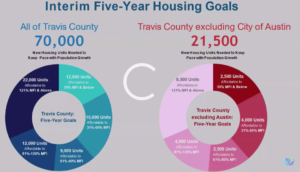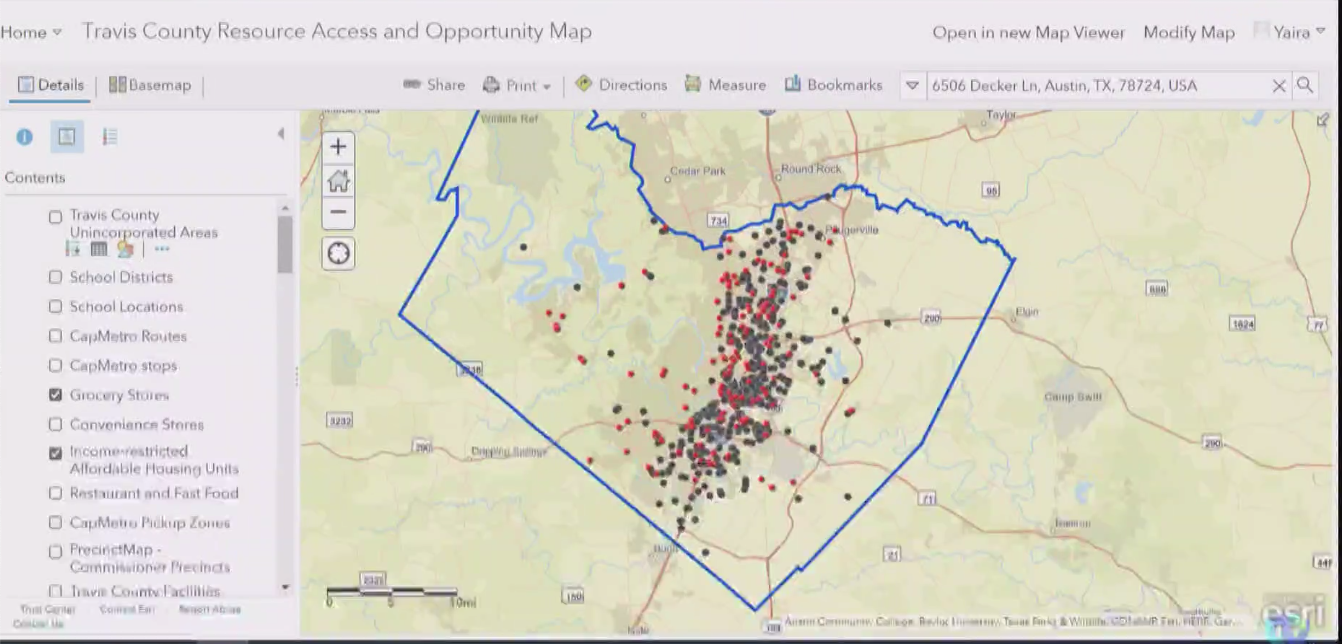Austin, Travis County aim to add tens of thousands of new units to meet demand
Wednesday, March 2, 2022 by
Seth Smalley As population and living demands explode in the greater Austin area, the Travis County Commissioners Court is grappling with the twin issues of affordable housing and housing needs. Seventy-thousand new units are needed in Austin and Travis County over the next five years to keep pace with population growth, the county projects, while the Commissioners Court says it has already overseen the creation of 10,000 new units over the last five to six years.
The discussion at Thursday’s work session also featured five-year goal recommendations, the pipeline of affordable housing development and current market conditions as they pertain to affordability and policy considerations.
“I’ve been proud that the county, which is not known for generating lots of affordable housing because we have such limited financial tools to work with, has gotten to the point of almost 10,000 units of affordable housing, much of it deeply affordable,” Commissioner Brigid Shea said.
Tax and subsidization incentives are often available in Travis County for developers and housing projects that offer greater affordability to future tenants. In September of last year alone, the county put $110 million in federal American Rescue Plan Act dollars toward affordable housing, administered via dozens of nonprofits including Mobile Loaves and Fishes, Integral Care and Caritas of Austin. The Department of Housing and Urban Development has also granted Travis County millions for affordable housing through the Community Development Block Grant program. This is in addition to scores of other affordable housing developments approved by the county (like this recent one), that often focus on ensuring community necessities like good transit and grocery stores.
The current five-year plan is to ensure the development of 70,000 new housing units in Travis County, 21,500 of which should be outside of Austin city limits, by 2027. While many developers jump at the opportunity to create luxury apartments absent of government direction, the county plans to strongly incentivize more affordable spaces to mitigate the effects of gentrification and the housing shortage.

According to the plan, 12,000 of the 70,000 units should be affordable to those making 30 percent of the median family income and below, 15,000 units should be affordable at 31 to 60 percent MFI and 9,000 should be affordable to those making 61 to 80 percent of area MFI. The remaining 34,000 units (about half of all potential new units) should be affordable to those who make from over 80 percent to above 120 percent MFI.
Shea affirmed that the county should be prioritizing below-market-rate rental units, as opposed to market-rate housing in general, in addition to emphasizing that, given its own track record, the county believes this interim five-year plan is achievable.
“I don’t feel like the county should be subsidizing market-rate units. So my focus is on the units from 30 to 60 percent, in that deeply affordable range,” Shea said.
Due to rapid market changes, market analysis conducted even in recent years has become unreliable, according to the Travis County planning office.
“We do have a comprehensive affordable housing analysis, but the market is very different than it was at the time that was completed,” said Christy Moffett, director of economic planning and strategic developments in the planning office. “And so I think we’re challenged to be able to assert that that is going to give us the most accurate picture at this time.”
Commissioner Jeffrey Travillion sang a familiar tune, emphasizing the need for planned communities. While he applauded the effort to focus on affordable housing, he believes that housing should exist within a communal context.
“When we look at our successful communities, we know that they are planned communities,” Travillion said. “We make sure that certain things are always there. If you are in Mueller, if you are in Circle C, if you’re in Hyde Park, there are certain things that are there that guarantee the success of the children who grow up in those areas. And as we build affordable housing, we have to make sure that those grocery stores, those learning opportunities, libraries and places for recreation are there.”
This map of the county illustrates Travillion’s point, with red and black dots that represent income-restricted affordable housing units and grocery stores. While many dots coincide, many do not.

The Austin Monitor’s work is made possible by donations from the community. Though our reporting covers donors from time to time, we are careful to keep business and editorial efforts separate while maintaining transparency. A complete list of donors is available here, and our code of ethics is explained here.
You're a community leader
And we’re honored you look to us for serious, in-depth news. You know a strong community needs local and dedicated watchdog reporting. We’re here for you and that won’t change. Now will you take the powerful next step and support our nonprofit news organization?




